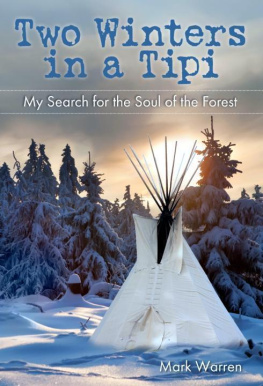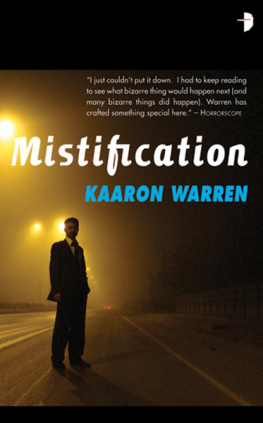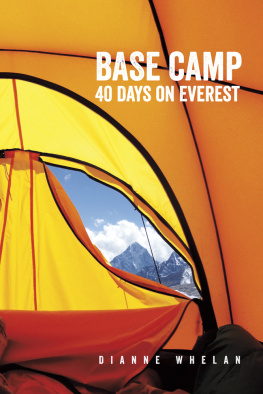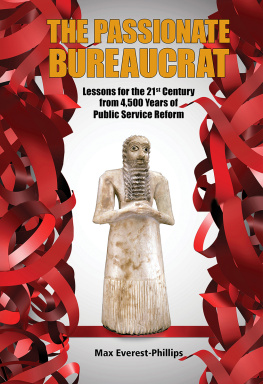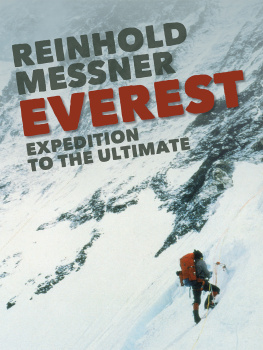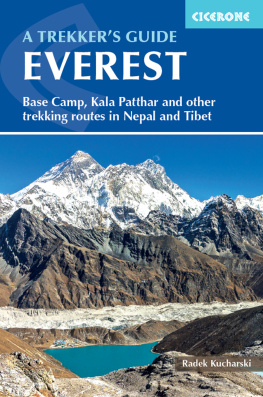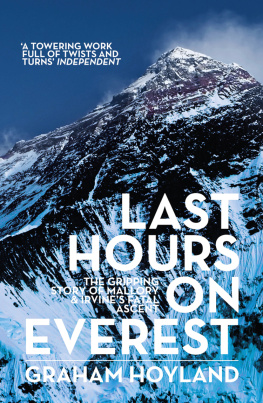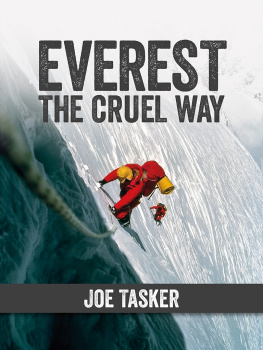LESSONS FROM EVEREST
Seven Powerful Steps to the Top of the World
Dr. Tim Warren

LESSONS FROM EVEREST:
SEVEN POWERFUL STEPS TO THE TOP OF THE WORLD
All rights reserved.
Copyright 2009 by Dr. Tim Warren.
This book may not be reproduced in whole
or in part, by other means, without permission.
Second ebook edition 2013 by AudioGO.
All Rights Reserved.
Trade ISBN 978-1-62064-874-2
Library ISBN 978-1-62460-215-3
Cover photo of Dave Hahn by Nicole Messner.
"Bust a Move," as performed by Young MC, was first published in 1989.
Music and lyrics by Marvin Young, Matt Dike, and Michael Ross.
LESSONS FROM EVEREST
Seven Powerful Steps to the Top of the World
CONTENTS
I NTRODUCTION
Mans Mind Mars MountainIn Maine
In every walk with nature, one receives far more than he seeks.
John Muir
Maybe we took the wrong trail and I wont have to go over the Knife Edge , I pleaded with myself for the thousandth time. My Newfie friend Bob Healey and I were scrambling up the rocky East face of Mt. Katahdin, in mid-state Maine. The forty-mile-per-hour wind gusts amplified my near-paralyzing unease. An ever-increasing sense of dread constricted my chest, making each breath labored and shallow. My lungs felt as if truck transmissions were chained to each lobe. I was terrified.
It was July 1992, and I had a four-year-old chiropractic practice, a three-year-old marriage, and a one-year-old son. I had been an endurance athlete since the age of twelve and a hiker since I could walk. With family and business constraints, I could get FWA (full wife approval) for one three-day backpacking trip per year. This was that tripand I was hatin it.
Bob had driven south from Canada, and I north from Rhode Island to climb Katahdins Knife Edge together. The Knife Edge is one of the most famous hikes in the Northeast. Although only a smidge over a mile long, it is frightfully exposedas the name implies. The elevated catwalk connects the two lesser summits, Pamola and Chimney, of Maines highest point at 5,267 feet. The trail has huge drop-offs on either side. We were told by the twenty-something park ranger we met on the climb that if a climber falls or is struck by lightning, his or her chance of survival is miniscule.
I had come up a day before Bob, and had in fact summited the mountain alone the previous day by the non-scary Hunt Trail. Hunt was part of the Appalachian Trail System; traditionally, thru hikers, as they are called, end their odyssey on Baxter Peak (the true summit of Katahdin), the terminus of the two-thousand mile slog from Georgia to Maine. The Knife Edge trip sounded like a great idea as I planned the excursion in the comfort of my sea-level living room.
I had a secret I failed to disclose to the unsuspecting Bob: I was terrified of heights. I had taken one disastrous rock-climbing class with my buddy Dana Millar several years before. Twenty feet above the ground, I had become so gripped with fear that I was frozen to the rockI couldnt go up and couldnt go down. Gradually, the instructor talked me into moving. I swore to never put myself in that miserable position again. I had mistakenly thought that the passage of years would somehow cure me of the dreaded grip. Alas, the overwhelming fear that had tethered my muscles and mind into stasis was alive and well.
I hate this. I hate this. Why did I do this to myself again? I bemoaned silently. I almost had myself convinced that we were on the wrong path and I would be saved the embarrassment of admitting my weakness to Bob. After some hours, we crested a stony plateau, arrived at Pamola Peak and gazed for the first time at The Edge. The route looked more trapeze than trail. The broken towers of rock that fell away for hundreds of feet below had a lunar essence, more dead than alive. Shiiiiiiiiittt, I cursed under my breath . Of course we had taken the correct path. I had known it deep down the entire day. Fear stared me in the face and there was no escape, even in the comfy recesses of my mind.
We started acrossor, more accurately, Bob started across. I took one step and was brick-walled by immobilizing fear for five minutes before venturing another step. The route was exposed, yes, but had handholds and footholds that made it manageable. I would as likely fall off a sidewalk as I would this trail. My mind, however, paid no heed. Billions of neural connections flooded my cerebrum with its version of the truth: I am a dead man if I move an eyelash .
I was an immobile mess. It was now ten minutes between steps. I insisted that Bob go on without me. I would haltingly retreat to Pamola Peak with my tail between my legs. In addition to the aforementioned car parts, my chest now had an engine block attached to it. I retraced leaden petrified steps to the safety of the plateau and from there watched Bob skip his merry way across the high wire trail.
I hunkered down among the rocks, out of the wind, and sullenly broke out a snack. I was not alone. A Boy Scout troop of eleven boys and two leaders had just arrived. They offloaded packs and broke out their chow. The boys were between twelve and thirteen years old and acted it, throwing food at each other and goofing off. I couldnt have pushed the Knife Edge from my mind with a herd of yaks, yet not once was it mentioned, even in passing, by any of the Scouts or the leaders. Were they oblivious to this deathtrap? After twenty minutes, the leaders simply shouted, Saddle up, boys, lets go. And with that, they cruised across the Knife Edge without so much as one complaint.
I sat there, mouth agape, dumbfounded. Why wasnt anybody else at least as afraid as I was, or even mildly tentative? Even the frickin twelve-year-olds traversed the route as if they were skipping their way to junior high gym class. Why was I such a basket case?
Then I got it: it was my head. My mind was sabotaging my life. And all this time I thought my head was on my side. I vowed that I would learn to make my mind an asset rather than allow it to function as the arch enemy of enjoyment, accomplishment and success. At that moment, I realized the critical importance of balancemental, physical and chemicalin ones life.
I am far from a Latin scholar, but the phrase mens sana in corpora sano suddenly made sense. It means sound in mind and body. I had no plans to do more climbing, but it was clear that life would bring plenty more opportunities for mind and body to successfully play on the same team. I was right, especially in the dimensions of work, love, and fatherhood, in my social, physical, financial and spiritual life. In 1993, I very quietly started climbing again.
Not in my wildest dreams could I fathom that nearly eighteen years to the day later, I would indeed be climbing again, this time on my second attempt of Mt. Everest. It is the highest point on earth and the Holy Grail for mountaineers everywhere (even the armchair variety). I had learned a valuable lesson on The Edge, but as it turned out, that was just the beginning.
My hope is that you, fellow climber of life, are inspired by the following words, and as your tanks may dwindle, my story in some small way may become your virtual Sherpa, leading you on with quiet confidence to your chosen Everest.
The greatest discovery of any generation, is that a human being can alter his life by altering his attitude. William James
C HAPTER ONE
Dream Management
You are led through your lifetime by the inner learning creature, the playful spirited being that is your real self. Dont turn away from possible futures before youre certain you dont have anything to learn from them.
Next page

